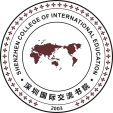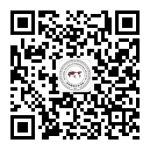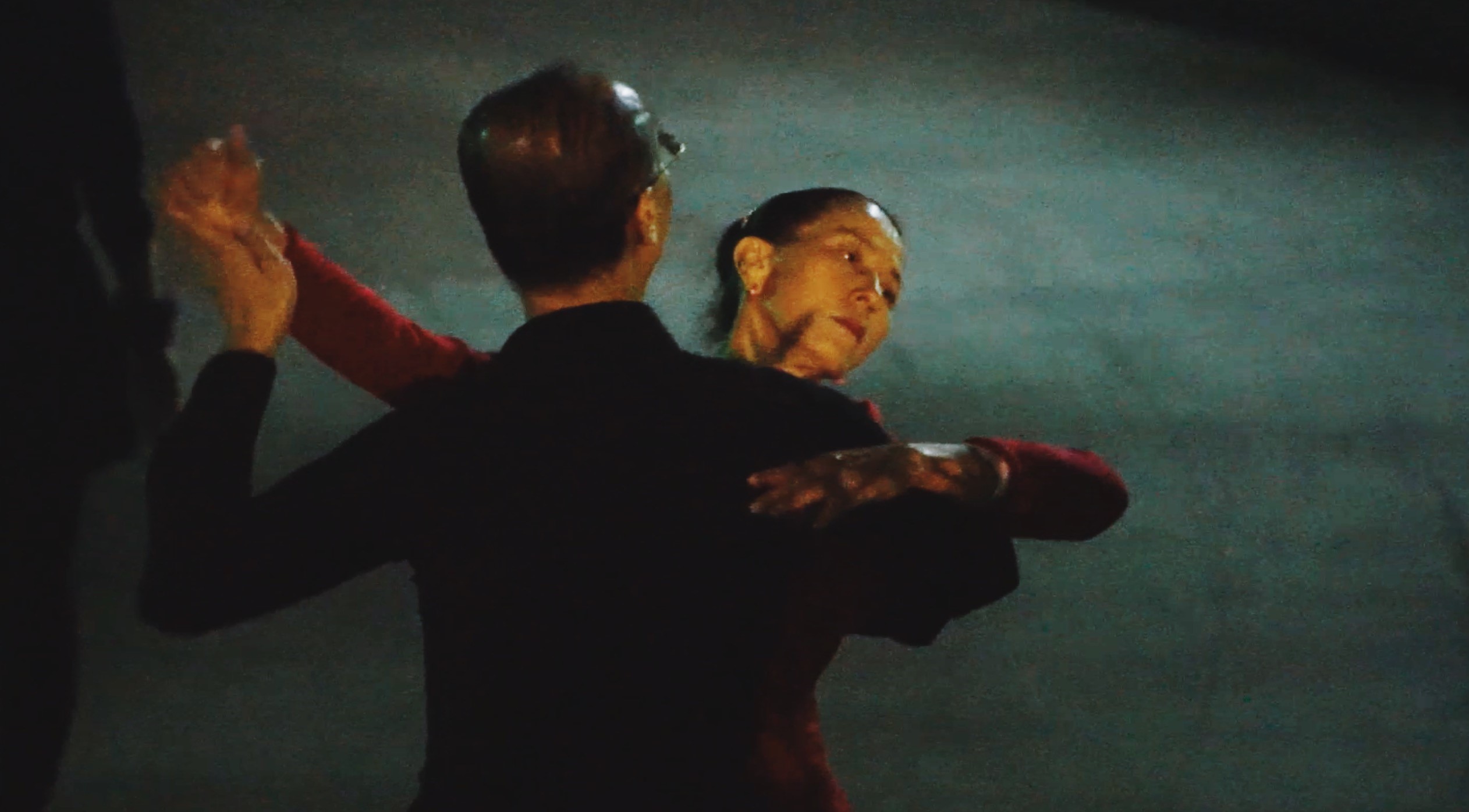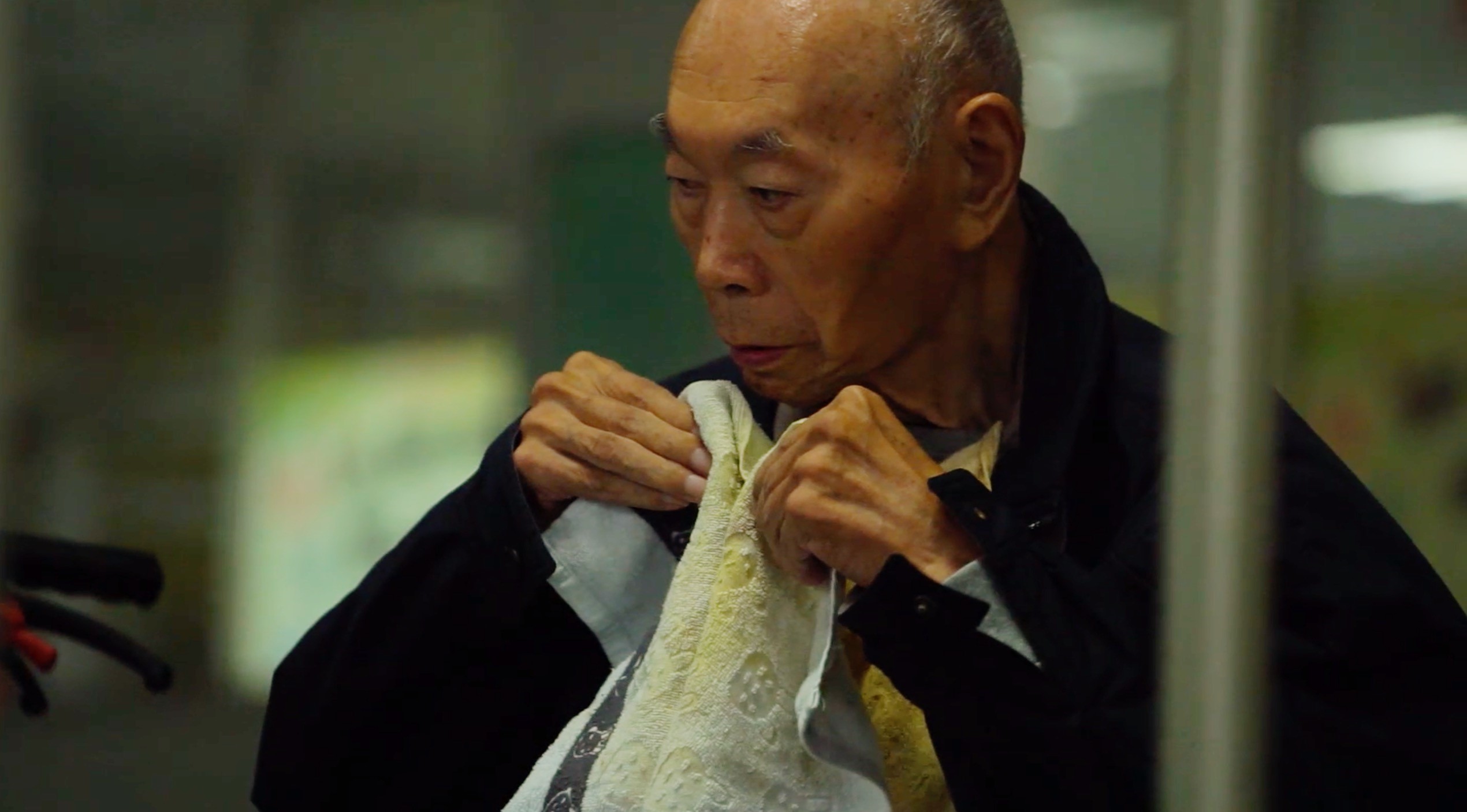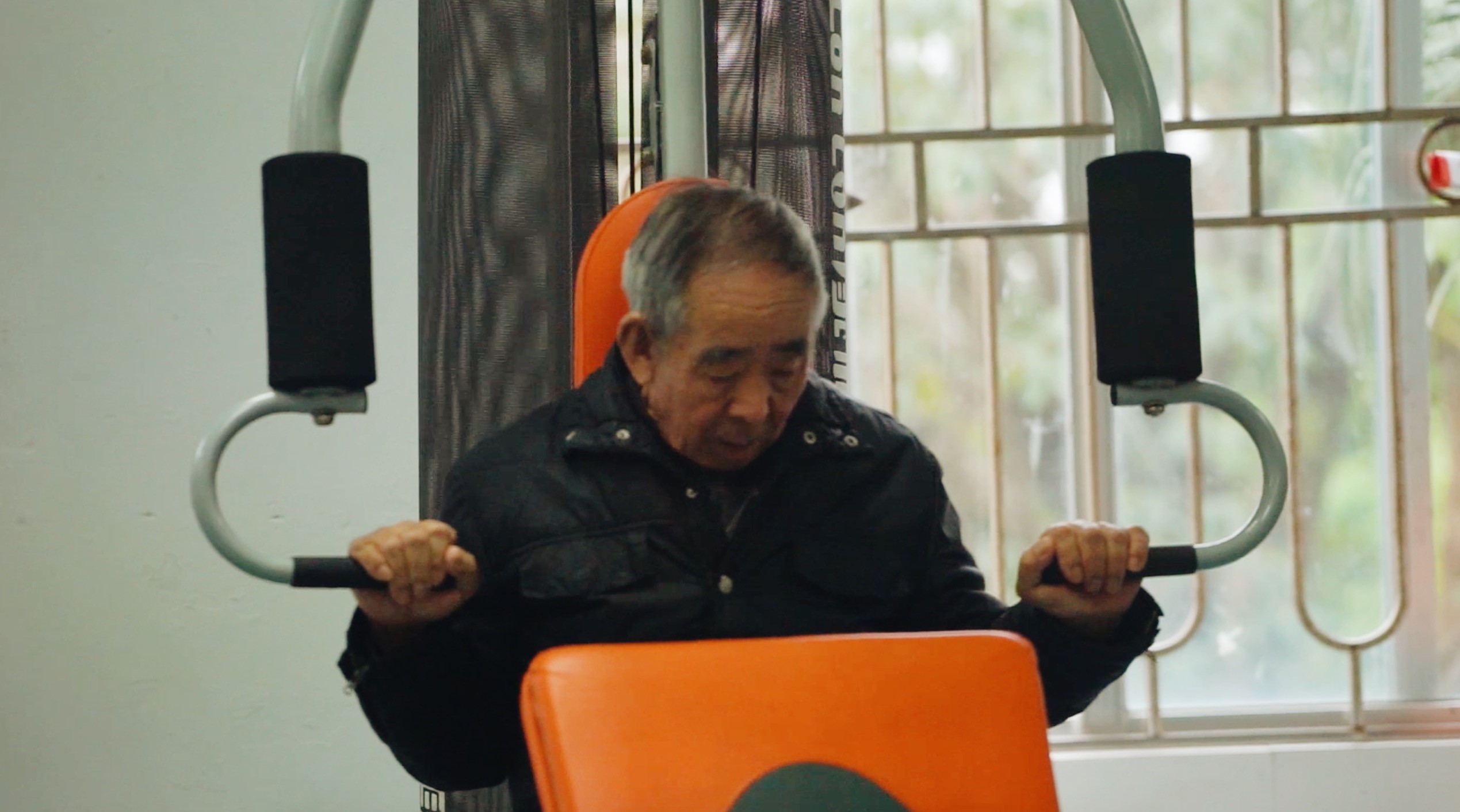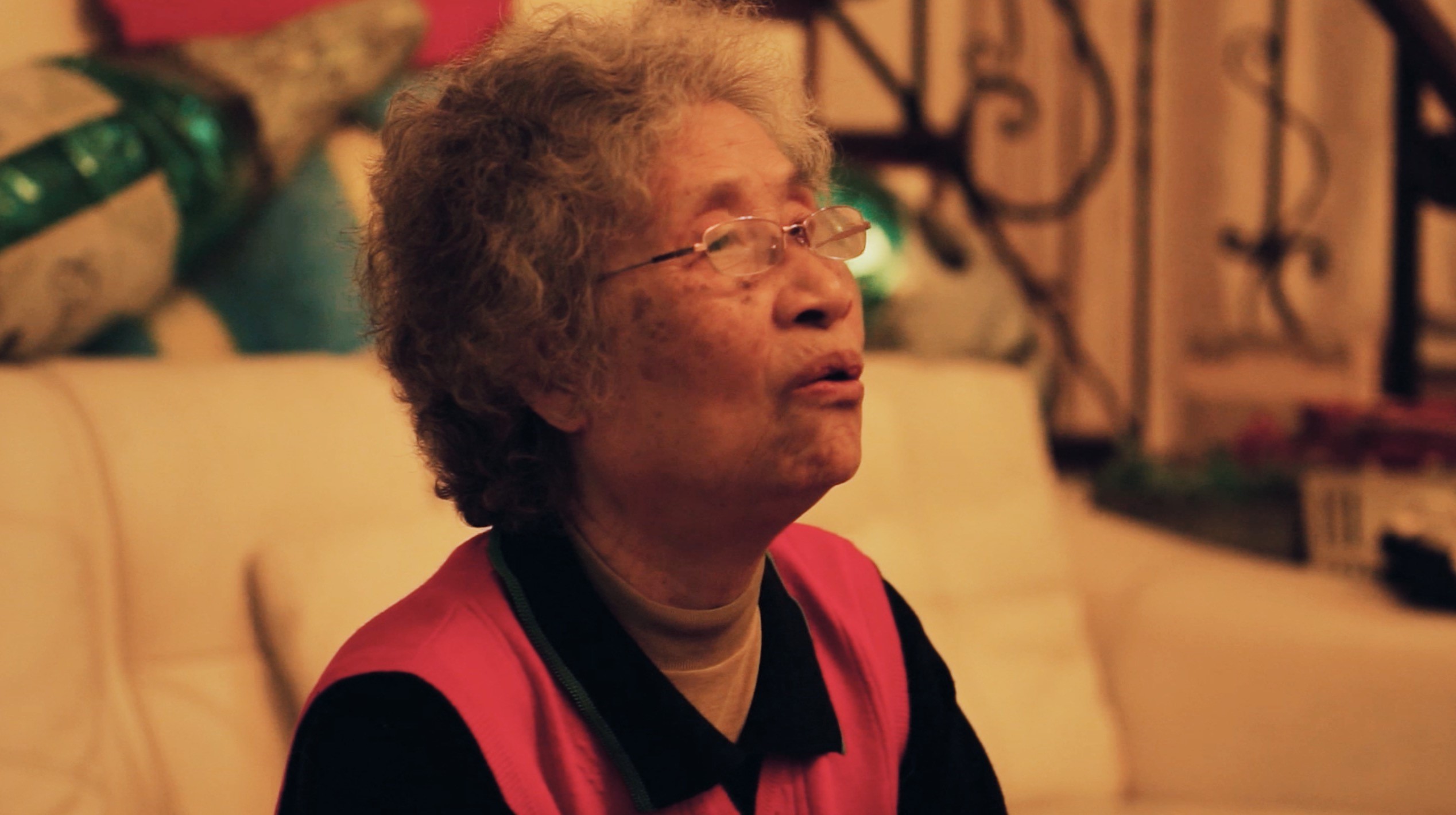Last month, the CS&Maths Week was conducted by the SCIE Maths and Computer Science Faculty, where several fun activities related to Maths and CS were organised during the week. Let’s follow the students to join this fun week!
Competitive Robots
Building Competitive Robots
Crafting a competitive robot is an exciting blend of innovation and precision engineering. From the initial brainstorming sessions to the final assembly, every step in the process demands creativity, problem-solving skills, and attention to detail.
Assembling the perfect combination of motors, sensors, and controllers is just the beginning; rigorous testing and iteration are essential to fine-tune the robot’s performance and ensure it can meet the challenges of the competition.
The journey of building a competitive robot is not just about winning trophies; it’s a testament to the boundless possibilities of technology and the spirit of innovation that drives us forward.


This activity is about two robots with the same weight fighting each other within 3 min. If one robot cannot move, it loses.
At first, I saw the poster about competitive robots in the Ann Cafe. I came to the theatre and saw different kinds of robots on the desk. The teacher there told us about the advantages and disadvantages of the robots. And then comes the most interesting part. We were allowed to fight each other using the robots they provided!
There were four buttons to control the movement of the robot and two buttons to control the weapon. Although I didn’t win, it was still a great time to play with my friends and other students and teachers.
At 4:30, I came to the theatre again and the teacher explained how the robots work. He said that the robots in the international competitions used the latest material! It needed lots of physics and engineering knowledge to build these robots. I am going to learn more about physics, maths and computer science. Maybe I can build one in the future!
Mathematical Photography Competition
It was an unforgettable experience to take part in the mathematical photography competition, which enabled me to discover the beauty of mathematics. During the process of shooting, I am not only looking for beautiful landscape patterns, but also exploring the application of mathematics in daily life.
Through the lens, I discovered the charm of mathematics, which is hidden in the symmetrical beauty of nature, in the geometric patterns of urban architecture, and even in People’s Daily lives. Mathematics gives vitality to architecture, and its beauty is also expressed by the architecture.
After understanding the significance of this activity, I walked under the light of a tall building and observed the structure of it. Its unique lighting design style made me stop walking and look up the building. At this moment, I decided to take this beautiful picture through my camera. I realized that mathematics is not only a logical discipline, but also an art form of creation and expression. Through this activity experience, I not only improved my photography cognition, but also deepened my understanding and love for mathematics.
Mathematics can be found in every corner of the building, as well as in the design drawings of the building, which makes me realize the close relationship between mathematics and art. They complement each other and jointly build the beauty and magic of the world. This not only gave me an unforgettable experience, but also gave me a new understanding and deep feeling of mathematics. I will continue to explore the mysteries of mathematics and photography, capture the beauty of mathematics with my lens, and let more people feel the charm and infinite possibilities of mathematics.


Title: Science Fiction Cube
Description: The lighting design of the building continues the geometric concept, with light at night continuing to maintain the spatial form and details of the building during the day. It uses lighting to sort out the volume levels that the building presents at night, and effectively uses lighting to add layers of smart and harmonious order beauty to the building.
For this contest, we were asked to find and add mathematics to an everyday thing or place and take a photo of our creation. We searched for the wonders of maths in the real world and took some of the most artistic pictures.
From this activity, I learned that maths is not just about writing boring numbers on a piece of paper. In fact, I learned that maths is everywhere around us! From geometrical shapes to sequences to tessellations, maths appears everywhere in our daily lives and makes part of our daily lives. By doing this activity, I realized how maths can be mystifying and interesting, and makes me eager to explore further into the world of mathematics.
I learned this in the process of doing this activity. During this period of taking the pictures, I was really looking into the world around me in search of traces of mathematics. They were actually easy to notice and find after I became focused and concentrated on finding them. This is how I learned that maths is everywhere around us.
I am thankful for this activity because it made me more aware of the importance of mathematics and allowed me to feel more interested in this subject. During the process, when I was taking the pictures, I obtained new thoughts and understandings about maths and felt more engaged and fascinated with this subject. To conclude, this was a very fun activity, and I gained a lot of new concepts and knowledge.



Sphero Robot Art Competition
After a huge effort devoted to the Sphero robot art competition, the event successfully completed. There were 4 teams in total, each representing each house: Fire, Metal, Water, and Wood.
Each team was required to first draw and then use the little Sphero robot to draw the image of the team logo. Well, at first, I thought this wasn’t going to be a really challenging task, and I definitely underestimated the difficulty of the task after I got my hands on it.
Throughout the process, I felt totally intrigued and shocked by this task, when the art students finished the drawing of the team logo, it was fabulous, and I doubted that I could make it better by adding colour to it using the robot.
The result turned out to be what I expected, the Sphero robot was much harder to control than I expected, due to the high viscosity of the paint, the robot struggled to move into the marsh-like paint and once it got to the areas where there weren’t much paint present, it would zoom like a flash getting totally out of control.
From this thrilling and fun activity, I understood that nothing is as easy as it may seem and a lot of things that we reckon as simple and easy are the creation of people who devoted numerous amount of time to it, in order to make it easier to be applicable and usable.
By gaining this experience, next time when I am learning new things, instead of assuming it is very simple, I will try to identify the hard parts and lay my aim on conquering those difficulties.

Rubik’s Cube Challenge
On a Tuesday noon during the Mathematics and Computer Science Week, I stood among numerous onlookers, watching as my classmates’ Rubik’s Cubes deftly rotated at their fingertips. The colored squares on the Rubik’s Cube, white, red, orange, yellow, green, and blue, seemed like slices of a rainbow, occasionally glinting in the sunlight.
The rapid, rhythmic sound produced by the swiftly rotating Rubik’s Cubes seemed to awaken memories of solving a 3×3 Rubik’s Cube buried in the recesses of my mind. The desire to solve the puzzle, accompanied by the joy it brought, compelled me to eagerly join this challenge.
Starting with the center of its bottom face, gradually constructing the middle layer, and finally completing the restoration of the top layer—yes, that’s it! Formulas and techniques resurfaced in my memory. Restoring the Rubik’s Cube felt like weaving a web; inadvertent mistakes could lead to the entire cube being scrambled. A timed Rubik’s Cube restoration competition was not only a test of technical skills and strategies but also a journey involving patience and resilience.
Wow! The speed at which the nearby students restored the Rubik’s Cube was impressive—10 seconds! The challenge of solving it with one hand had begun too! The race against time during the rotations intertwined with the cheers of the students. The area beside the bustling volleyball court felt like a small gathering, where each successfully restored Rubik’s Cube marked a moment of personal achievement.
These memories, formed by each fleeting moment, will also inspire us on our academic journey. Each rotation and pairing, much like solving a math problem or writing code, represents a logical step taken under specific conditions with corresponding strategies. This is a wellspring of inspiration, a treasure trove of memories.
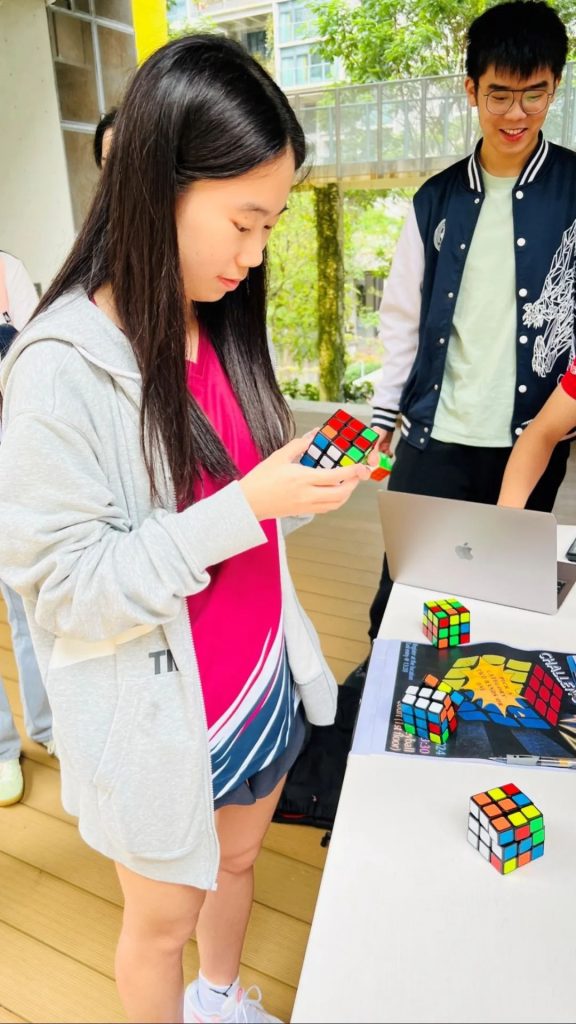
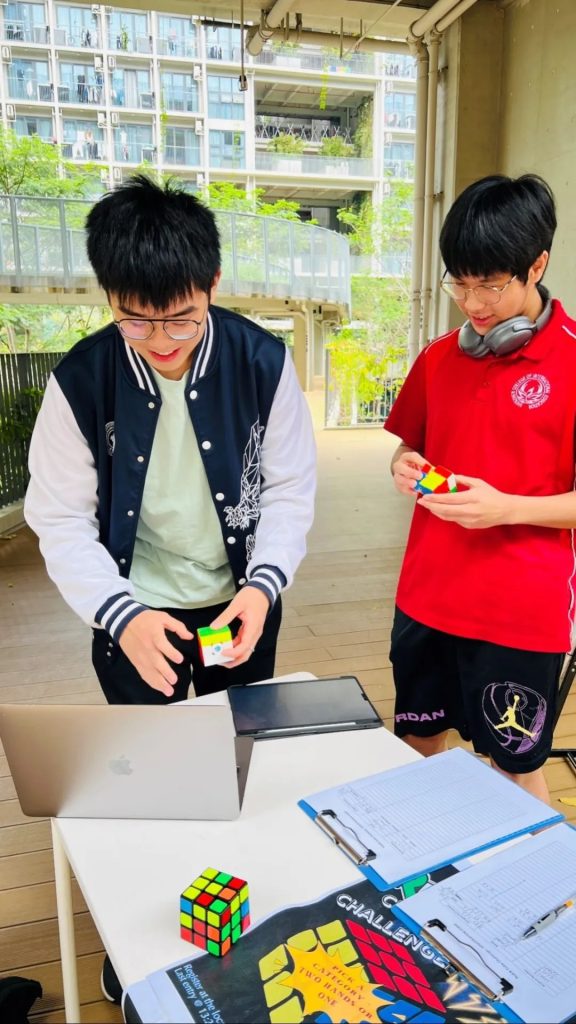
Lecture
Lecture: Partial Differential Equation and Image Processing
Presenter: Professor Gui Changfeng, Macau University, Mathematics Department.
During his lecture, Professor Gui discussed the broad applications of partial differential equations, from suspension bridge design to fluid dynamics and image processing. He emphasized the importance of mathematics in fields like artificial intelligence and computer science, highlighting its role in solving complex research problems and advancing technology. The lecture sparked interest among students, inspiring future research aspirations and reinforcing the value of rigorous academic pursuit.
In conclusion, Professor Gui stressed the need to break down disciplinary barriers for the future development of mathematics, particularly in applied mathematics, to address evolving challenges in various fields.
By discussing the diverse applications of partial differential equations, the lecture exposes students to the wide range of fields where mathematical concepts are applicable. This broadens their perspectives and helps them understand the relevance of mathematics beyond traditional academic settings. The lecture helps them to understand that a solid foundation in mathematics not only enables them to excel in their chosen fields but also equips them with problem-solving abilities crucial for addressing complex challenges in technology and science.

Teachers’ Debate
Debate Sparks Discussion:
Will AI Replace Teachers in the Next 20 Years?
An engaging and thought-provoking debate took place among eight teachers from various faculties, centered around the moot question: Will Artificial Intelligence (AI) replace teachers in the next two decades? The event, which attracted widespread attention and participation, shed light on the evolving role of technology in education and sparked insightful discussions on its potential implications for both students and teachers.
The debate presented contrasting perspectives on the role of AI in education. Advocates for AI argued that advancements in technology, particularly in the field of machine learning and natural language processing, have enabled AI systems to deliver personalised and adaptive learning experiences to students. These systems can analyse vast amounts of data to identify individual learning needs, provide instant feedback, and tailor educational content to match students’ pace and preferences. Proponents emphasised the efficiency and scalability of AI-driven education, highlighting its potential to address challenges such as overcrowded classrooms and limited access to quality education in remote areas.
On the other hand, opponents raised concerns about the human aspects of teaching that AI may struggle to replicate. They emphasised the importance of empathy, creativity, and critical thinking in the teaching process, qualities that are inherently human and difficult to automate. Teachers play a crucial role not only in imparting knowledge but also in nurturing students’ social and emotional development, fostering a sense of community, and inspiring lifelong learning. While AI can augment teaching by automating routine tasks and providing supplementary resources, it cannot fully replace the human connection and mentorship that teachers provide.
Despite the different views presented in the debate, one consensus emerged: AI has the potential to revolutionise education by augmenting teachers’ capabilities and enhancing learning outcomes for students. By leveraging AI-driven tools and technologies, teachers can personalise instruction, identify and address learning gaps more effectively, and create engaging and interactive learning experiences. Moreover, AI can assist teachers in administrative tasks, allowing them to focus more on individualised instruction and student support.
For students, the integration of AI in education offers numerous benefits. AI-powered learning platforms can adapt to students’ learning styles and preferences, providing personalised feedback and recommendations to enhance their understanding and retention of concepts. For teachers, embracing AI presents opportunities for professional growth and development. By incorporating AI tools into their teaching practice, educators can gain insights into students’ learning patterns, experiment with innovative teaching methodologies, and collaborate with peers to share best practices and resources.
In conclusion, while the debate on whether AI will replace teachers remains ongoing, it is evident that AI has the potential to transform education in profound ways. By employing the power of AI-driven technologies, educators can create more inclusive, adaptive, and personalised learning experiences for students, ultimately empowering them to thrive in the digital age.

FOBISIA STEM Flying Challenge
Fostering Innovation and Collaboration: Highlights from the FOBISIA STEM Flying Challenge 2024
In the heart of Thailand, from the 22nd to the 24th of March 2024, the vibrant atmosphere of innovation and collaboration filled the air as students from more than 20 schools across Asia gathered for the FOBISIA STEM Flying Challenge. This eagerly anticipated event provided a platform for young minds to soar as they delved into the realms of science, technology, engineering, and mathematics (STEM).
At its core, the FOBISIA STEM Flying Challenge sought to provide and enhance opportunities for students to not only participate but also develop and excel in various events and activities. While the spotlight was on flying challenges, the underlying emphasis extended far beyond mere competition. The event was designed to nurture crucial skills such as leadership, team building, resilience, and the art of forging lasting friendships – all while having an exhilarating time.
One of the most captivating aspects of the event was the diversity of categories that students could engage in. From drone building to aerial maneuvers, participants had the chance to showcase their ingenuity and technical competence. The drone building category, in particular, brought forth a wave of creativity as students meticulously designed and constructed their flying machines, pushing the boundaries of innovation with each component assembled.
Two teams from SCIE participated in the Drone Challenge. Our students demonstrated not only their technical proficiency but also their ability to adapt and overcome challenges under pressure. In the end, one team secured the bronze medal, which symbolizes the dedication, passion, and hard work embodied by our students, and the other team secured silver medal for team spirit and collaboration. They serve as a testament to what can be accomplished when talent meets determination.

Michelle Meng, A Team Captain
Participating in STEM competitions presents both challenges and rewards. Through these competitions, I have learned valuable lessons in applying creativity and teamwork to problem-solving. We were tasked with three projects during the competition: team relay drone racing, crafting gliders, and designing an F1 race car.
With only a two-hour time limit for each project, we had to swiftly design solutions and collaborate closely to accomplish our project. Every team member contributed valuable ideas, enabling us to divide tasks effectively and work together seamlessly. Despite encountering minor setbacks and intense timing, we achieved our tasks wonderfully. collision of ideas and the contrast between thoughts and realities filled the task with amusement.
In the end, we successfully completed all projects within the tight time frame, holding third and fourth places in the competitions. This competition strengthened our creativity and teamwork skills. Our achievement was proof of our collective effort and collaboration. This experience taught me how to thrive under pressure and translate ideas into action, enhancing my ability to manage academic tasks and exam pressures. Furthermore, developing creativity and collaboration skills is invaluable for both academic pursuits and future careers.
However, what stood out to me the most was an unexpected, pleasant surprise during the drone project. I noticed differences between the site setup and the given instructions. Despite being a nervous newcomer, I nervously raised this issue with the teacher and suggested changes. To my delight, the teacher not only accepted my suggestion but also awarded us a 10-second “bonus time.”
Later, in the classroom, the teacher addressed all students, saying, “I’m glad someone pointed out the mistake in the setup. You should be brave to point out the mistakes. I am a teacher, not the God, of course I make mistakes. I am happy to see you have your own thoughts” and “Why penalize mistakes? everyone makes mistakes, it’s how we learn”. This incident boosted our group’s confidence for the following day’s competition.
From then on, the teacher remembered my name, and our interactions became more friendly. He often cracked jokes, encouraging me to smile more frequently, fostering a warm and sincere friendship between us.


- Article / CS Class
